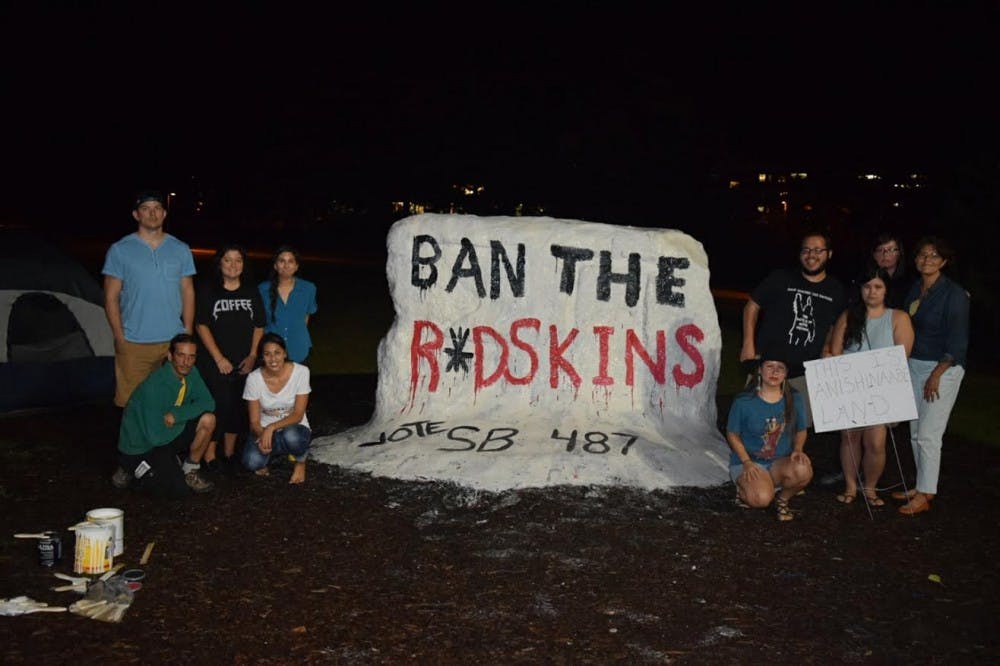It's not news that the Rock, located near Fairchild Auditorium on Farm Lane, is getting repainted; its entire purpose is to serve as a platform for some cause until it's repainted by whoever else is willing to "guard" it for 24 hours.
However, each painting represents someone's passion. For the Native American Law Students Association, the unique forum represents an opportunity to educate students on a long-discussed topic: the use of the term "redskin" and Native American imagery in sports.
About 15 people braved a muggy and stormy Thursday night to repaint the Rock. Emmy Scott, a NALSA member, pointed to the five high schools in Michigan that still use the "Redskins" name and mascot as evidence that her organization needed to publicize their cause. She said that the term and usage of Native Americans as mascots can impact indigenous children's self-esteem when they have to attend schools where they are portrayed in a stereotypical and inaccurate light.
"The imagery and the mascots, they're so ingrained in the American psyche that people don't see it as something that's wrong, whereas if you used any other race in the place of that, people would automatically say, 'Well, that's wrong, that's racist,'" Scott said. "But when it comes to Native Americans, we've been used that way for so long that people just take it for granted that that's the way that it's supposed to be."
The effort is intended to raise support for Michigan Senate Bill 487, which would ban the use of the name "Redskins" in public schools. Scott, a third-year law student at MSU, said the Rock's central location and role at MSU tradition made a logical forum to express their goal.
"As the Rock is Michigan State culture, it's a way to bring it to the attention of the MSU community and hopefully the state of Michigan," Scott said.
The repainting was timed to both coincide with Michigan Indian Day, which falls on the fourth Friday of every September, as well as the Native MSU Welcome Reception, an event to welcome incoming and returning indigenous students.
Clarissa Grimes, a third-year student studying immigration law, came out to the repainting effort despite not belonging to the NALSA. She agreed that the Rock was a powerful symbol because its visibility on campus allows all students to reflect on the issue, not just those who are affected most.
"Even if you aren't indigenous yourself, how we treat indigenous peoples has an effect on us as well," Grimes said. "So it's important for everybody in our country, not just people who are directly impacted by these issues."
Although, per MSU tradition, the group had been camping out next to the Rock since early Thursday morning for the right to repaint it, two groups reportedly approached the NALSA stakeout and attempted to repaint it for their own purposes. Scott said one group claimed NALSA hadn't been touching the Rock while camping and therefore lost their right to paint. This squabble led Scott to place a sign reading "This is Anishinaabe Land" in the grass next to the Rock, a reference to the indigenous peoples that initially inhabited the Michigan region.
Later in the day, another woman suggested NALSA could share the Rock with her group since she had an event going on the next day, despite the woman not camping out for the "required" 24-hour period.
Support student media!
Please consider donating to The State News and help fund the future of journalism.
Discussion
Share and discuss “The Rock repainted to draw attention to offensive mascot names” on social media.





